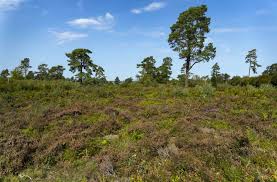Introduction
Heaths, often overlooked gems of natural beauty, offer serene landscapes that captivate with their unique flora and fauna. Let's delve into what makes heaths so special and how they contribute to our environment and well-being.
**Introduction to Heathlands**
Heathlands are diverse ecosystems characterized by open, low-growing vegetation, typically found on acidic soils. They are often associated with sandy or rocky landscapes and are home to a wide variety of plant and animal species adapted to nutrient-poor conditions.

**Flora of the Heath*
The flora of heathlands is adapted to thrive in harsh environmental conditions. Typical plants include heather (Calluna vulgaris), gorse (Ulex spp.), bilberry (Vaccinium myrtillus), and various grasses and mosses. These plants not only provide habitat and food for wildlife but also contribute to the unique beauty of heath landscapes.
**Fauna and Biodiversity**
Heathlands support a diverse range of wildlife, including birds such as stonechats, nightjars, and skylarks, as well as reptiles like adders and common lizards. Insects such as butterflies and bees are also abundant, making heaths crucial habitats for biodiversity conservation.
**Ecological Importance**
Beyond their aesthetic appeal, heathlands play crucial ecological roles. They help maintain soil stability, regulate water flow, and support nutrient cycling. Their open structure allows sunlight to reach the ground, fostering a unique microclimate that supports specialized plant and animal communities.
**Cultural Significance**
Heathlands have cultural significance in many regions, often featuring in folklore, literature, and art. They provide recreational opportunities for hiking, birdwatching, and photography, allowing people to connect with nature and unwind in peaceful surroundings.

**Conservation Challenges**
Despite their ecological and cultural value, heathlands face threats from urbanization, agricultural intensification, and climate change. Conservation efforts focus on habitat restoration, invasive species management, and raising awareness about the importance of protecting these fragile ecosystems.
**Heathland Restoration and Management**
Restoration projects aim to recreate and maintain healthy heathland habitats through techniques such as controlled burning, grazing management, and selective planting of native species. These efforts help preserve biodiversity and ensure the continued existence of heaths for future generations.
**Benefits of Visiting Heathlands**
Visiting heathlands offers numerous benefits for physical and mental well-being. The peaceful environment promotes relaxation and stress reduction, while physical activities like walking or cycling provide exercise and connection with nature. Educating visitors about heathland ecology enhances appreciation and encourages stewardship.
**Conclusion: Preserving Heathlands for the Future**
Heaths are not just landscapes; they are vital ecosystems teeming with life and rich cultural heritage. By understanding their ecological significance, supporting conservation efforts, and enjoying their natural beauty responsibly, we can ensure that heathlands continue to thrive and inspire for generations to come. Let's embrace and protect these natural treasures for the benefit of both nature and ourselves.The article explores the concept of holistic health, emphasizing its comprehensive approach to well-being encompassing physical, mental, emotional, and spiritual aspects. It discusses practical strategies such as balanced nutrition, regular exercise, stress management techniques, and nurturing relationships. Highlighted are the importance of adequate sleep, resilience-building, and incorporating mindfulness into daily routines. regular exercise, stress management techniques, and nurturing relationships. Highlighted are the importance of adequate sleep, resilience-building, and incorporating mindfulness into daily routines.


You must be logged in to post a comment.